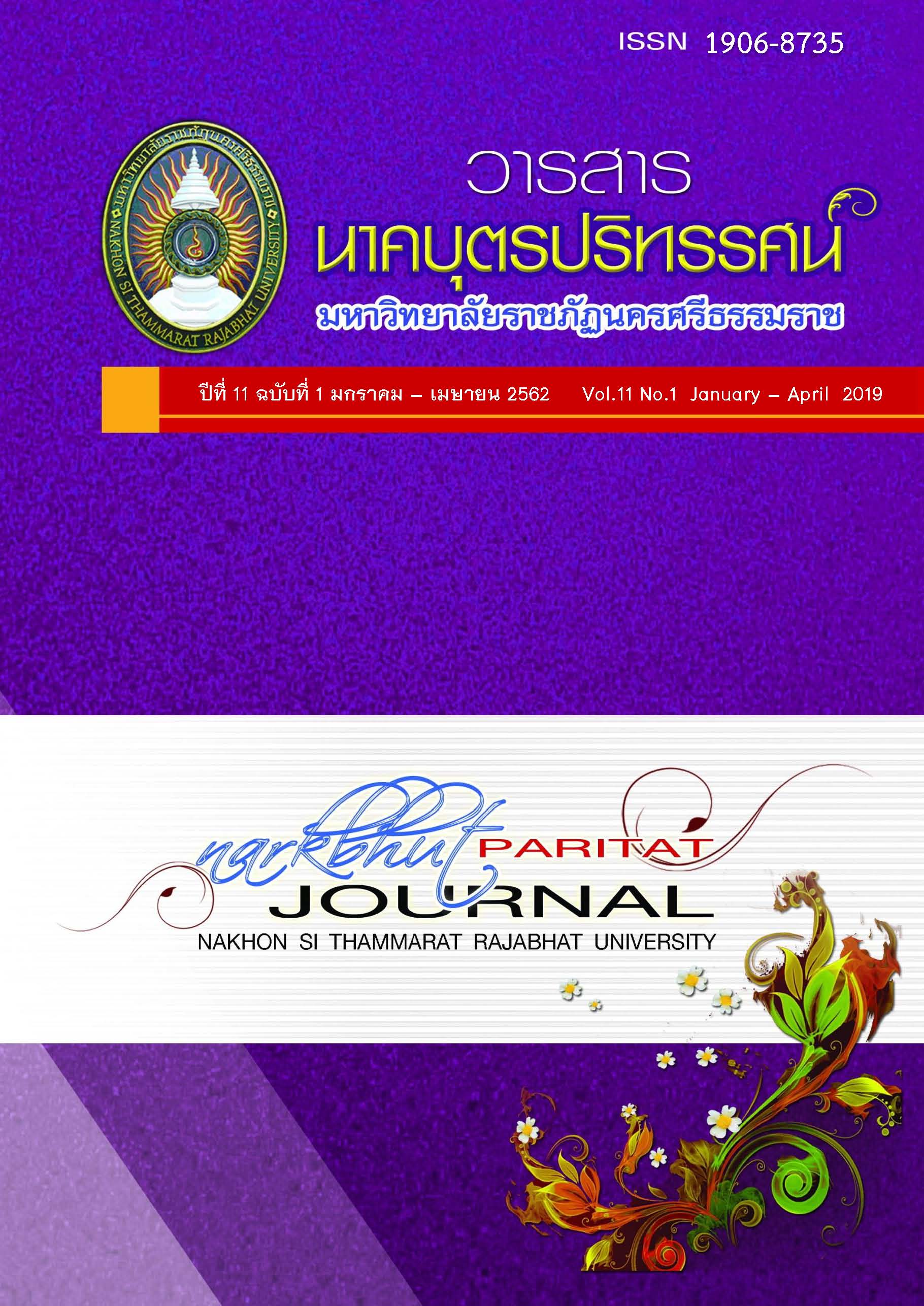เครื่องจักรและการเอาใจใส่คนในยุคนี้ Machine and Empathy in this Era
Main Article Content
Abstract
เทคโนโลยีที่เปลี่ยนแปลงไปส่งผลให้เกิดการพัฒนาเครื่องจักรมาใช้ทดแทนแรงงานคน โดยเครื่องจักรสามารถเพิ่มประสิทธิภาพการผลิตและการดำเนินงานมากขึ้น องค์การเลยเห็นความสำคัญจึงได้มีการนำเครื่องจักรมาใช้ ทำให้ส่งผลต่อการใช้แรงงานคนลดลง นั้นเป็นประเด็นที่ส่งผลต่อกลุ่มแรงงานใช้ฝีมือที่สามารถนำเครื่องจักรมาทดแทนได้ ดังนั้นองค์การจึงต้องสร้างความสมดุลระหว่างแรงงานคนกลุ่มนี้กับเครื่องจักร ซึ่งการสร้างความเห็นอกเห็นใจ การเอาใจใส่ เป็นสิ่งที่องค์การมองข้ามไม่ได้ เพราะคนกลุ่มนี้เป็นผู้มีส่วนได้ส่วนเสียโดยตรงกับองค์การ องค์การจึงต้องใช้วิธีการสื่อสารทำความเข้าใจผ่านนโยบาย นำไปสู่การสร้างเป็นวัฒนธรรม เพื่อสร้างการยอมรับในการนำเครื่องจักรมาใช้ควบคุมประสิทธิภาพการดำเนินงาน และในขณะเดียวกันคนกลุ่มนี้ยอมรับและมีแรงจูงใจในพฤติกรรมต่างๆ เพื่อองค์การ
Article Details
Section
บทความวิชาการ
References
Reference
Birasnav, M. (2014). Knowledge Management and Organizational Performance in the Service Industry: The Role of Transformational Leadership Beyond the Effects of Transactional Leadership. Journal of Business Research: 1622–1629.
Desjardins, J. (2009). An Introduction to Business. Singapore: Ma Graw Hill.
Dietz, J., Kleinlogel, P. E. (2014). Wage Cuts and Managers’ Empathy: How a Positive Emotion Can Contribute to Positive Organizational Ethics in Difficult Times. J Bus Ethics: 461-472
Dutta, S. & Omolayole, O. (2016). Are There Differences Between Men and Women in Information Technology Innovation Adoption Behaviors: A Theoretical Study. Journal of Business Diversity: 106-114
Görkem, S. Y. (2014). Corporate communication in large-scale organizations in Turkey:Structure and Responsibilities. Public Relations Review: 859-861.
Itani, S. O. & Inyang, A. E. (2015). The effects of empathy and listening of salespeople on relationship quality in the retail banking industry The moderating role of felt stress. International Journal of Bank: 692-716
Lala, G. (2014). The Emergence and Development of the Technology Acceptance Model (TAM). International Conference "Marketing - from Information to Decision": 149-160.
Men, L. R. (2015). The Internal communication role of the chief executive officer:Communication channels, style, and effectiveness. Public Relations Review: 461–471.
Nicolas, A. Z., Bjoern, S., Dirk, S., & Ruth, M .S. (2015). CEO Influences on Firms’ Strategic Actions: A Comparison of CEO-, Firm-, and Industry-Level Effects. Journal of Business Research: 2338-2346.
Parks, S. E. (2015). Listening with Empathy in Organizational Communication. Organization Development Journal: 9-23
Pohling, R., Bzdok, D., Eigenstetter, M., Stumpf S., & Strobel A. (2016) What is Ethical Competence? The Role of Empathy, Personal Values, and the Five-Factor Model of Personality in Ethical Decision-Making. Journal of Business Ethics: 449–474
Robert, P. (2015) Entrepreneurial Leadership Theory: An Exploration of Three Essential Start-Up Task Behaviors. International Conference on Management, Leadership & Governance: 215-223
Whiteside, B. D., & Barclay, J. L. (2016) The Face of Fairness: Self-Awareness as a Means to Promote Fairness among Managers with Low Empathy. Journal of Business Ethics: 721–730.
Birasnav, M. (2014). Knowledge Management and Organizational Performance in the Service Industry: The Role of Transformational Leadership Beyond the Effects of Transactional Leadership. Journal of Business Research: 1622–1629.
Desjardins, J. (2009). An Introduction to Business. Singapore: Ma Graw Hill.
Dietz, J., Kleinlogel, P. E. (2014). Wage Cuts and Managers’ Empathy: How a Positive Emotion Can Contribute to Positive Organizational Ethics in Difficult Times. J Bus Ethics: 461-472
Dutta, S. & Omolayole, O. (2016). Are There Differences Between Men and Women in Information Technology Innovation Adoption Behaviors: A Theoretical Study. Journal of Business Diversity: 106-114
Görkem, S. Y. (2014). Corporate communication in large-scale organizations in Turkey:Structure and Responsibilities. Public Relations Review: 859-861.
Itani, S. O. & Inyang, A. E. (2015). The effects of empathy and listening of salespeople on relationship quality in the retail banking industry The moderating role of felt stress. International Journal of Bank: 692-716
Lala, G. (2014). The Emergence and Development of the Technology Acceptance Model (TAM). International Conference "Marketing - from Information to Decision": 149-160.
Men, L. R. (2015). The Internal communication role of the chief executive officer:Communication channels, style, and effectiveness. Public Relations Review: 461–471.
Nicolas, A. Z., Bjoern, S., Dirk, S., & Ruth, M .S. (2015). CEO Influences on Firms’ Strategic Actions: A Comparison of CEO-, Firm-, and Industry-Level Effects. Journal of Business Research: 2338-2346.
Parks, S. E. (2015). Listening with Empathy in Organizational Communication. Organization Development Journal: 9-23
Pohling, R., Bzdok, D., Eigenstetter, M., Stumpf S., & Strobel A. (2016) What is Ethical Competence? The Role of Empathy, Personal Values, and the Five-Factor Model of Personality in Ethical Decision-Making. Journal of Business Ethics: 449–474
Robert, P. (2015) Entrepreneurial Leadership Theory: An Exploration of Three Essential Start-Up Task Behaviors. International Conference on Management, Leadership & Governance: 215-223
Whiteside, B. D., & Barclay, J. L. (2016) The Face of Fairness: Self-Awareness as a Means to Promote Fairness among Managers with Low Empathy. Journal of Business Ethics: 721–730.

